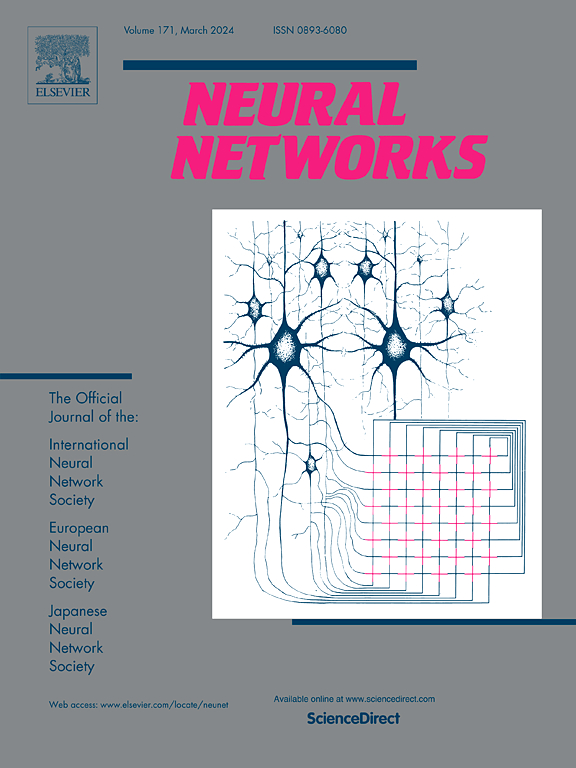优化深度学习网络,准确识别骨髓中的癌细胞
IF 6.3
1区 计算机科学
Q1 COMPUTER SCIENCE, ARTIFICIAL INTELLIGENCE
引用次数: 0
摘要
放射科医生利用 X 射线、磁共振成像或计算机断层扫描的照片来诊断骨癌。人工方法耗费大量人力,而且可能需要专业知识。因此,创建一个区分恶性和健康骨骼的自动化流程至关重要。罹患癌症的骨骼与未受影响区域的骨骼质地不同。血液病的诊断依赖于对骨髓中的有核细胞进行正确标记和分类。然而,病理学家需要对标本进行鉴定,而鉴定工作既敏感又耗时,这阻碍了及时诊断和治疗。人工智能(尤其是机器学习和深度学习)的发展极大地增强了人类评估和识别这些更复杂疾病的能力。相反,要提高癌细胞的识别能力并降低误报率,还需要进行大量的研究和开发。为了解决这个问题,我们建立了一个用于形态分析的深度学习模型。本文介绍了一种新型深度卷积神经网络架构,其中使用了混合多目标和基于类别的优化算法来自适应优化超参数。将处理过的细胞图片作为输入,然后用优化的基于注意力的多尺度卷积神经网络对所提出的模型进行训练,以识别骨髓中癌细胞的种类。我们在公开数据集上进行了广泛的实验,并使用一系列性能指标对实验结果进行了测量和评估。与已经训练过的深度学习模型相比,确定总准确率为 99.7%,更胜一筹。本文章由计算机程序翻译,如有差异,请以英文原文为准。
Optimized deep learning networks for accurate identification of cancer cells in bone marrow
Radiologists utilize pictures from X-rays, magnetic resonance imaging, or computed tomography scans to diagnose bone cancer. Manual methods are labor-intensive and may need specialized knowledge. As a result, creating an automated process for distinguishing between malignant and healthy bone is essential. Bones that have cancer have a different texture than bones in unaffected areas. Diagnosing hematological illnesses relies on correct labeling and categorizing nucleated cells in the bone marrow. However, timely diagnosis and treatment are hampered by pathologists' need to identify specimens, which can be sensitive and time-consuming manually. Humanity's ability to evaluate and identify these more complicated illnesses has significantly been bolstered by the development of artificial intelligence, particularly machine, and deep learning. Conversely, much research and development is needed to enhance cancer cell identification—and lower false alarm rates. We built a deep learning model for morphological analysis to solve this problem. This paper introduces a novel deep convolutional neural network architecture in which hybrid multi-objective and category-based optimization algorithms are used to optimize the hyperparameters adaptively. Using the processed cell pictures as input, the proposed model is then trained with an optimized attention-based multi-scale convolutional neural network to identify the kind of cancer cells in the bone marrow. Extensive experiments are run on publicly available datasets, with the results being measured and evaluated using a wide range of performance indicators. In contrast to deep learning models that have already been trained, the total accuracy of 99.7% was determined to be superior.
求助全文
通过发布文献求助,成功后即可免费获取论文全文。
去求助
来源期刊

Neural Networks
工程技术-计算机:人工智能
CiteScore
13.90
自引率
7.70%
发文量
425
审稿时长
67 days
期刊介绍:
Neural Networks is a platform that aims to foster an international community of scholars and practitioners interested in neural networks, deep learning, and other approaches to artificial intelligence and machine learning. Our journal invites submissions covering various aspects of neural networks research, from computational neuroscience and cognitive modeling to mathematical analyses and engineering applications. By providing a forum for interdisciplinary discussions between biology and technology, we aim to encourage the development of biologically-inspired artificial intelligence.
 求助内容:
求助内容: 应助结果提醒方式:
应助结果提醒方式:


